Insights from 'The Righteous Mind': Moral Psychology Unpacked
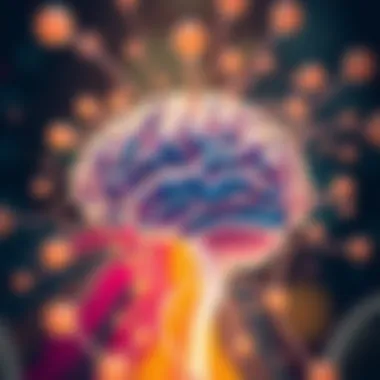
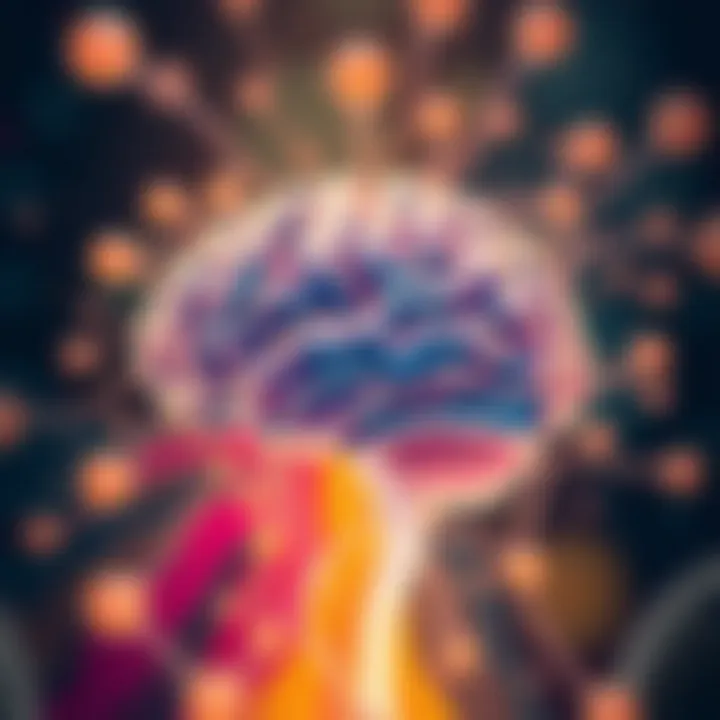
Intro
In an era where public discourse often feels more like an emotional battleground than a rational exchange of ideas, understanding the foundations of our beliefs has never been more essential. Jonathon Haidt's book, The Righteous Mind, presents an insightful exploration into the scaffolding of our moral psychology and its role in shaping our worldviews, particularly within the politically charged atmospheres we face today. This article aims to distill the nuanced themes and arguments found within Haidt's work, offering a comprehensive overview that encourages a deeper contemplation of morality and its societal implications.
Categories of Life-Changing Books
Books that incite change within the reader often fit into well-defined categories. When we consider Haidt's The Righteous Mind, we can position it alongside other seminal works that challenge our perceptions and provoke thoughtful discussion.
Self-Help and Personal Development
While The Righteous Mind isn't a traditional self-help book, it serves as an excellent guide for personal growth. It nudges readers to evaluate their moral compass and understand differing perspectives through a psychological lens. This leads to better conflict resolution and a more respectful approach to those with opposing views.
- It encourages empathy, showing that moral reasoning is often less about rationality and more about our underlying intuitions.
- Readers can learn to identify and control their emotional responses when engaging in heated debates.
- Through grasping these moral foundations, individuals will find themselves becoming more open-minded, essential in today's polarized climate.
Fiction with Transformative Themes
Haidt’s insights, when juxtaposed with transformative fiction, can highlight the moral dilemmas characters face—offering a unique framework for reflection. Works of fiction often tackle moral questions, challenging our sense of right and wrong in profound ways. This intersection allows readers to explore complex ideas in light of relatable narratives, deepening their understanding of morality.
- Examples of such transformative fiction could include:
- George Orwell's 1984 - revealing societal manipulation of truth.
- Harper Lee's To Kill a Mockingbird - exploring prejudice and innocence.
These stories shine a light on the moral quandaries we all face, illustrating how different values can create sharp divides in our perceptions and decisions, similar to the discussions found in Haidt's work.
Book Summaries and Insights
Understanding the essential messages within The Righteous Mind can facilitate the application of its insights into our daily lives. The book serves not only as a theoretical discussion but also as a practical guide to navigating interpersonal relationships in the world of diverse moral views.
Key Takeaways from Popular Titles
Haidt identifies several key points crucial for unraveling the complex web of human morality:
- Intuition Comes First, Strategic Reasoning Second: Decisions driven by emotion often act before logical reasoning kicks in.
- Moral Foundations Theory: Haidt outlines key moral foundations that differ across cultures, such as care, fairness, loyalty, authority, and sanctity, and how they influence political Leanings.
- Groupishness: Our innate tendency to bond and create factions can lead to tribalism, affecting our ability to reason inclusively.
These insights can shift how we communicate and engage with those who hold divergent opinions, ultimately fostering a more respectful and understanding society.
How to Apply Insights in Daily Life
To integrate Haidt's teachings into everyday situations, consider these strategies:
- Practice active listening: When in discussion, don’t just wait for your turn to speak. Understand where they’re coming from, even if you don’t agree.
- Find common ground: Identify shared values to ease tensions when discussing contentious topics.
- Be aware of your own biases: Recognize when your emotions might cloud your rational judgment, and don’t assume the same for others.
“We’re all just a bunch of monkeys running around with our moral intuitions driving our bus, while rear-ending any rational thought that tries to take the wheel.”—Jonathan Haidt
In the pursuit of clarity and comprehension regarding morality and human behavior, The Righteous Mind carves paths through complex psychological landscapes. Each insight urges us to ponder the undercurrents shaping our values and beliefs. This reflection is not merely an academic exercise, but a necessary journey toward achieving greater societal cohesion, particularly in our increasingly fractured political climate. By illuminating why we think the way we do, Haidt opens doors to discussions that are fundamental to human connections and the fabric of our civilization.
For further reading and a broader perspective, consider visiting Wikipedia or resources like Britannica to supplement this discourse on moral psychology and its relevance in current social structures.
Prelims to Moral Psychology
Moral psychology is an intriguing subset of psychology that grapples with what drives human behavior when it comes to making moral decisions. In Jonathan Haidt's* 'The Righteous Mind', this field of study is integral to understanding the broader themes of morality that influence our thoughts, actions, and interactions. It dives headfirst into the dynamics of why we might feel strongly about certain principles while being unable to comprehend opposing views.
This examination gives a clear lens through which we can see our moral fabric, facilitating a better understanding of complex situations in our social and political landscapes. The great benefit here is the clarity it brings to the often nuanced warring tribes of cultural factions. Our beliefs do not form in a vacuum; they are shaped by a myriad of factors including environment, upbringing, and social engagement. Understanding morality is not just for philosophers; it's essential for anyone engaged in public discourse, governance, or community involvement.
The mere essence of morality influences relationships, societal norms, and political frameworks, making it imperative to delve deeper into its origins and effects. This exploration helps clarify why people align with particular ideologies and engage in political tribalism, working against ideals of cooperation or compromise. By integrating moral psychology into everyday interaction and policy-making, we can foster dialogues that, while challenging, might lead towards more constructive outcomes.
In this article, we will dissect how Haidt articulates the distinctions between moral intuition and reasoning, emphasizing that our moral judgments often operate like an automatic pilot. This understanding will lay the groundwork for our further exploration into what underpins our complex moral wiring—you might say it’s almost like peeling an onion, revealing layers that wouldn’t have normally come to light.
Understanding the Righteous Mind
Haidt's 'The Righteous Mind' offers a comprehensive examination into how our minds become emotionally and psychologically tied to morality. He argues that morality is not merely an abstract construct, but instead rooted in moral intuitions that overwhelmingly shape our decisions before we even engage in rational thought.
For instance, a classic example can be seen in how different cultures prioritize various aspects of morality, such as the sanctity of life versus individual freedom. Each culture operates under its own moral compass, creating environments where 'right' and 'wrong' can drastically differ. Understanding the 'Righteous Mind' requires one to acknowledge these diverse approaches and consider how they contribute to political polarization.
The Importance of Morality
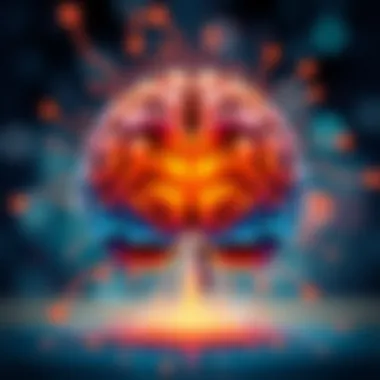
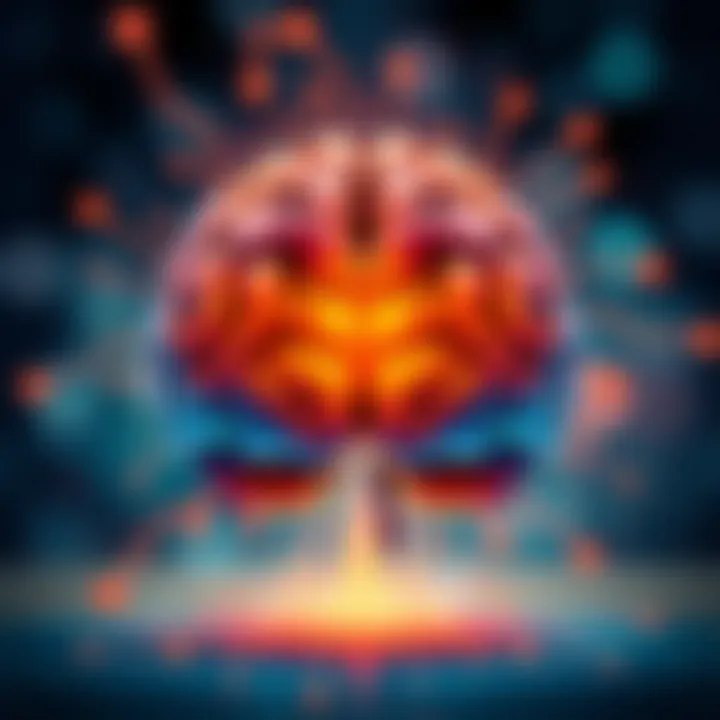
Morality serves as the backbone for social coherence and collective decision-making. It shapes laws and cultural practices, catalyzing societal change. The importance of morality extends far beyond individual behavior; it is the very fabric that binds communities together. Without a shared moral framework, misunderstandings can fester and grow into broader conflicts.
Recognizing the diverse moral foundations outlined by Haidt highlights how disagreements often stem not from divergent facts but from fundamentally different values and principles.
In summary, an informed understanding of moral psychology, as presented in 'The Righteous Mind', can enhance our engagements in daily discourse, enabling more productive conversations about pressing societal issues. The nuances of our moral intuitions remind us that empathy, even toward those we oppose, can pave the way for healthier dialogues and deeper insights into the human condition.
Core Premises of The Righteous Mind
The core premises of Jonathan Haidt's The Righteous Mind serve as the backbone for our understanding of moral psychology. These foundations not only clarify how individuals construct their moral frameworks but also illustrate why moral disagreements often lead to societal fractures. A deep dive into these principles reveals how our underlying psychological mechanisms shape the moral landscapes we navigate daily. Both students of psychology and general readers stand to benefit greatly from engaging with these ideas, as they shed light on the motivations behind human behavior and intergroup conflicts.
Moral Intuition vs. Moral Reasoning
Moral intuition and moral reasoning are like two sides of the same coin in Haidt's framework. At the heart of his argument is the notion that much of our moral decision-making is governed by intuition. This means many judgments are made quickly, almost instinctively, pulling upon an emotional reservoir rather than through deliberative thought.
To illustrate this, consider a scenario where one witnesses an act of kindness. Instinctively, one might feel a surge of joy or gratitude, asserting that such behavior is ‘morally good’ without necessarily engaging in a lengthy analysis of why it is classified as such. Conversely, when faced with a moral dilemma, like whether to lie to protect a friend, individuals often begin to weigh consequences and ethical ramifications, engaging in moral reasoning. But the initial response—whether it be positive or negative—still often springs from intuition.
An example that drives this point home can be seen when people react to political leader’s ethical failures. Their gut reactions often hinge on emotional responses, such as anger or disappointment, rather than a systematic evaluation of the leader’s policies. These intuitive judgments provide a framework through which reasoning subsequently occurs.
Haidt emphasizes that understanding the tension between these two processes is paramount. Many well-intentioned debates crumble into chaos when individuals disregard the intuitive underpinnings of their beliefs. In this sense, moral reasoning may serve more as a tool for justifying pre-existing intuitions rather than function as an objective arbiter of right and wrong. This insight is vital in fostering more empathetic discussions across the canyon of ideological divides.
The Automaticity of Moral Judgments
Automaticity in moral judgments refers to the instant and often unconscious reactions we have regarding moral situations. This phenomenon can be best understood through the lens of cognition—much like breathing, our moral responses often happen without the conscious thought. This automaticity plays a crucial role in how we categorize actions as good or bad, right or wrong.
For instance, consider a scenario where two strangers engage in a heated argument. When one party resorts to insults, observers might instantaneously label this behavior as immoral. This judgment occurs almost reflexively, based on an ingrained understanding of social norms rather than rational assessment. Through this lens, responses to moral issues regarding everything from social justice to fairness emerge as split-second evaluations often grounded in cultural values and personal upbringing.
The implications of this automaticity extend beyond mere observations; they have significant consequences for our interpersonal relationships and societal discourse. When conversations about morality arise, particularly in politically charged environments, individuals often respond with pre-formed notions. This can lead to defensiveness and avoidance of constructive dialogue, as each party feels morally superior without considering the emotional undercurrents in play.
In essence, recognizing the automatic processes behind moral judgments can provide a pathway toward more fruitful interactions across disagreement. When people acknowledge the instinctive nature of their positions, they might be more inclined to explore the foundations of their beliefs and engage in discussions fostering mutual understanding.
"The mind is divided, like a rider on an elephant. The rider represents rational thought, while the elephant symbolizes our gut feelings and intuitions." - Jonathan Haidt
Understanding the dynamics between moral intuition and reasoning, along with the automaticity of moral judgments, lays the groundwork for navigating ethical discourses in a more informed and compassionate manner. These principles not only elucidate the complexities inherent in moral decision-making but also highlight why conversations around morality become so polarized.
The Three Foundations of Morality
In Jonathan Haidt's exploration of moral psychology, he introduces five key foundations of morality which serve as the bedrock for understanding our ethical instinct. These foundations—Care vs. Harm, Fairness vs. Cheating, Loyalty vs. Betrayal, Authority vs. Subversion, and Sanctity vs. Degradation—are crucial in decoding not only individual moral decisions but also the larger societal conflicts that often arise from differing moral perspectives. Each foundation provides a lens through which moral behavior can be discerned, allowing for a deeper insight into what drives human interactions, whether in personal relationships or broader political landscapes.
Let’s explore each of these foundations, examining their implications and significance in the context of our ethical views.
Care vs. Harm
The Care vs. Harm foundation revolves around the basic human instinct to nurture and protect others, especially those who are vulnerable. This foundation is deeply embedded in various cultures and societies as it emphasizes empathy, compassion, and kindness. When we see a person in need or suffering, our instinctive reaction often is to alleviate that pain.
In a practical sense, this foundation can influence policies regarding healthcare, welfare systems, and even animal rights considerations. For example, advocates for social justice often cite the moral imperative to care for marginalized communities, arguing that the collective wellbeing of society hinges on how we treat its most vulnerable members.
Furthermore, the framework encourages individual introspection; individuals can evaluate their choices by asking themselves—"Am I causing harm or am I fostering care?" This self-reflection can lead to moral growth and conscientious actions, therefore influencing broader discussions on ethics in society.
Fairness vs. Cheating
Fairness vs. Cheating is another cornerstone in Haidt's moral foundation. This principle is centered on justice, equality, and the idea that everyone should get what they deserve. The sense of fairness extends beyond personal interactions; it encompasses how societies function. When fairness is perceived to be absent, or when cheating is evident, it can provoke strong negative reactions.
This underscores the importance of integrity in both personal conduct and institutional frameworks. For example, laws and regulations are typically designed to maintain a level of fairness in society, ensuring that no one group can exploit another without consequences. Furthermore, discussions around affirmative action, wealth distribution, and workplace equity often sit at the intersection of this moral foundation. The question of fairness raises significant ethical dilemmas that require deep examination.
Loyalty vs. Betrayal
Loyalty vs. Betrayal taps into our instincts for group affiliation and allegiance. Humans are inherently social beings and our tribes, families, or communities often establish the context in which our moral codes develop. Loyalty emphasizes the bonds that hold groups together and the moral obligation individuals feel to stand by their group members, sometimes even at the cost of fairness or care.
This foundation is often seen in various societal dynamics like nationalism where citizens may rally around their country's actions, right or wrong, underscoring a collective identity. While loyalty can promote unity and camaraderie, it can also pose challenges—like the idea that betrayal is one of the gravest offenses, prompting ethical conflicts when individual morals clash with group loyalty.
Authority vs. Subversion
Authority vs. Subversion delves into the respect for tradition, hierarchy, and established structures within society. This foundation highlights how people often regard authority figures or traditional wisdom. The debate surrounding this principle frequently emerges in discussions about governance, leadership, and cultural expectations. People often look to authority as a guiding force in moral decisions—be it a political leader, a religious figure, or even long-held cultural traditions.
However, questioning authority and advocating for subversion can also be seen as morally justified, especially in contexts of injustice or oppression. Historical movements advocating for civil rights serve as prime examples where individuals or groups have challenged authoritative norms in the name of justice and equality.
Sanctity vs. Degradation
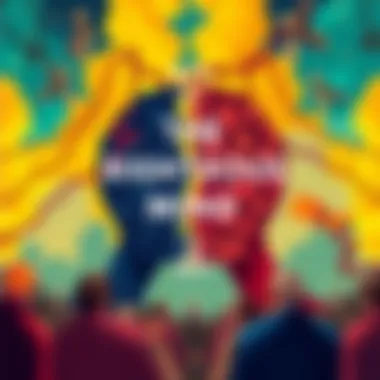
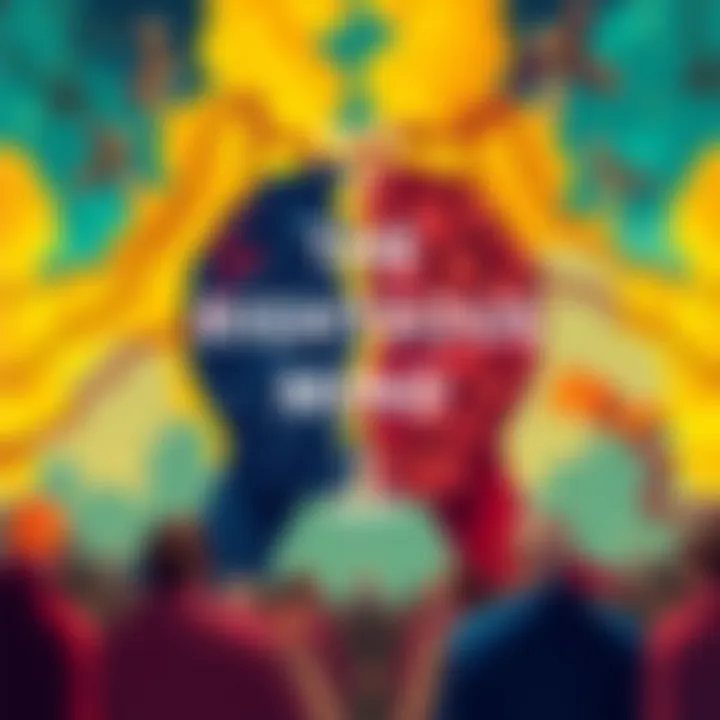
Sanctity vs. Degradation reflects the human inclination to uphold certain beliefs about purity, spirituality, and value, often tied to religious or cultural frameworks. This moral foundation governs perceptions of what is honorable or sacred and, conversely, what is perceived as corrupt or degrading. It underpins reactions towards issues such as environmental conservation, human dignity, and even debates on sexual morality.
The elements of this foundation often manifest in discussions about social norms, ethical boundaries, and the intrinsic values that societies hold dear. It provides a pathway for individuals to evaluate their principles and determine what they find ethically acceptable or unacceptable, enriching the ongoing dialogue about cultural values and personal beliefs.
Ultimately, each of these five foundations of morality not only shapes individual moral decisions but also provides insight into the complex tapestry of societal interactions and conflicts. By examining these foundations, one can better understand the various moral frameworks that govern diverse human perspectives, revealing the intricate relationship between morality and culture.
Moral Foundations Theory Explained
Moral Foundations Theory offers a compelling framework for understanding how our moral instincts operate and influence our behavior and thoughts. Seen as instrumental in the discourse surrounding morality, especially in the context of political and social interactions, this theory provides layers of complexity that bring depth to the narrative established by Jonathan Haidt in 'The Righteous Mind'.
Through this exploration, we can truly grasp that morality isn’t a one-size-fits-all scenario; instead, it’s multi-faceted and woven together with nuances that can help define our interactions with ourselves and others. Highlighting the implications and breadth of this theory is crucial. It paints a vivid picture of how deeply ingrained values can lead to stark differences in perspectives and opinions, fueling societal tensions and enriching discourse.
Overview of the Theory
The essence of Moral Foundations Theory lies within five foundational moral premises. These include:
- Care vs. Harm – This aspect reflects our dedication to nurturing and protecting others, rooted in empathic feelings. It emphasizes kindness and compassion, starkly opposed to actions that lead to harm or suffering.
- Fairness vs. Cheating – This speaks to the inherent human desire for justice and equity in interactions. It’s about ensuring that everyone plays by the rules, safeguarding against exploitation.
- Loyalty vs. Betrayal – Here, we dive into the significance of group loyalty, whether it be to one's family, community, or broader society, fostering a sense of unity and belonging.
- Authority vs. Subversion – This aspect underscores respect for traditions and roles, providing a structure for social order. Disrespecting authority can lead to chaos and societal breakdown.
- Sanctity vs. Degradation – This touches on the perception of bodily and psychological purity, often manifesting in the way people react to perceived immorality or degradation of values.
"Understanding these foundations is the key to bridging our ideological divides."
Each of these dimensions not only functions independently but also interacts with one another, underlining their importance in everyday life. As individuals navigate their perceptions, they draw on these foundations to shape moral judgments, which can significantly differ across cultural contexts.
Implications of Moral Foundations
Delving deep into the implications of Moral Foundations Theory presents several pivotal insights:
- Enhanced Dialogue – By recognizing that people may prioritize different moral foundations, there's potential to engage in more productive discussions. When individuals are aware of their own biases stemming from these foundations, they can approach conversations with a mindset geared toward understanding rather than condemnation.
- Policy Development – This theory can be a guiding light for policymakers striving for inclusivity. Understanding the varied moral bases of constituents may enable the creation of policies that resonate across the spectrum, bridging gaps rather than exacerbating them.
- Conflict Resolution – In arenas where conflict is prevalent, such as workplaces or community disputes, applying these foundations might help identify root differences in moral reasoning. Conflict often flares up when people feel their deeply-held values are under threat; acknowledging these can provide pathways to resolution.
In pursuing future research opportunities, considering how these foundational principles can be further explored and tested could enrich the social discourse. Leveraging the theory’s insights might reveal ways to foster harmony in settings characterized by stark ideological divides.
In sum, Moral Foundations Theory acts as a robust tool in the analysis of morality, not just for academic purposes but also for practical applications. It invites us to reflect on our values and re-examine how we engage with those who hold different beliefs.
For more information, resources like Wikipedia or academic sites such as Britannica provide further reading on the nuances of this theory.
Moral Psychology and Political Divisions
Moral psychology, as elucidated in Jonathan Haidt's work, plays a crucial role in understanding the political divisions that characterize contemporary society. It’s easy to dismiss political conflicts as merely policy disagreements, but these skirmishes often run much deeper, intertwined with our moral fabric. The dissection of how morals guide beliefs sheds light on the disparity in perspectives, enabling us to grasp not just what people believe, but why they believe it. This understanding can illumine pathways to dialogue, fostering better communication among varying ideological groups.
Understanding Political Tribalism
Political tribalism is an inherent aspect of human nature that can heavily influence our interactions. It aligns neatly with Haidt’s exploration of morality and intuition. Most individuals tend to form emotional attachments to their political groups, akin to tribal identities. When one’s moral views converge with those of their tribe, it can create a sense of belonging that’s hard to challenge. For instance, consider how communities rally around issues such as climate change or immigration policy. These discussions often transcend rational discourse, becoming battlegrounds for deeply held moral beliefs.
This tribal phenomenon has its roots in our psychological architecture. People are wired to seek acceptance within their groups, creating an echo chamber that amplifies their views while silencing dissent.
"Seeing the world in black and white often strips away nuanced understanding that challenges these tribal assumptions." - Jonathan Haidt
The consequences of this dynamic are potent. It creates an environment where understanding becomes secondary to defense of one’s tribe. Each side believes they're fighting a noble cause, yet this causes significant rifts that may distance individuals from constructive conversations.
The Role of Group Identity
Group identity plays a significant role in determining our moral perspectives and political alignments. When individuals identify with a group, their personal beliefs often become secondary to the collective identity. This shift can sometimes blur individual moral frameworks, reshaping them to align with group norms. People might sacrifice their own beliefs for the sake of solidarity, leading to that unsettling sensation of herd mentality.
In Haidt's examination, the role of group identity is foundational in how we process and respond to events or policies that affect our political tribes. Events that fuel outrage or protest can galvanize a tribe while simultaneously alienating others. For instance, the way groups respond to controversial matters—be it police reform, healthcare, or economic policy—reflects not merely a political stance but a profound sense of identity.
Consider the social implications of this. By fostering stronger group identities through shared values, it can embolden communities to take collective action. Alternately, a strong group identity may hinder cross-group understanding, deepening the chasm between differing factions.
The End
In essence, moral psychology provides the blueprint for understanding political divisions, particularly through the nuances of tribalism and group identity. These elements intertwine with our moral intuitions, guiding not only how individuals process political information, but also how they interact with those on opposing sides. To bridge these divides, acknowledging the psychological mechanisms at play is paramount.
Applications of Haidt's Insights
The insights presented in Jonathan Haidt's 'The Righteous Mind' serve as a bridge to understanding how moral psychology underpins much of human behavior, particularly in the realm of political and ideological divides. Grasping these concepts is crucial for those in academic circles, policy-making, and social advocacy. This section delves into how Haidt's reflections can be utilized practically, especially when fostering conversations around sensitive topics and informing public policies.
Fostering Dialogue Between Ideological Opponents


Engaging in dialogue across ideological lines has never been more vital in today’s polarized society. Haidt emphasizes that moral psychology operates on intuitive judgments which can often lead to misunderstandings. When individuals encounter opposing viewpoints, the instinct may be to rebut or dismiss them outright. However, taking a step back to understand the underlying moral frameworks can facilitate more productive conversations.
To put this into practice, consider the following strategies:
- Active Listening: Before presenting your own opinions, truly listen to the perspectives of others. This helps build empathy and demonstrates respect.
- Identify Common Ground: Often, people may have more in common than they realize. Finding shared values, even amidst deep differences, can create a foundation for meaningful dialogue.
- Ask Questions: Encouraging deeper discussions by asking open-ended questions can often unveil the intricacies behind someone’s beliefs, moving the conversation beyond mere slogans or soundbites.
- Frame Discussions in Terms of Moral Foundations: Referencing Haidt's five moral foundations can help frame discussions in a way that acknowledges differing moral viewpoints without intending to change them. For instance, addressing policies about care can highlight shared concerns about welfare, while still accepting differing methods to achieve those ends.
Establishing these practices can pave the way for open discourse, transforming opponents into interlocutors, and perhaps even allies.
Implications for Policy Making
Haidt’s work presents a thought-provoking lens for policymakers striving to create inclusive and effective legislation. Understanding moral psychology's role in public opinion can equip decision-makers to craft policies that resonate more deeply with diverse populations.
Here are some considerations for utilizing Haidt’s insights within policy-making:
- Cultural Sensitivity: Recognize that policies must address the moral concerns of varied constituencies. This includes acknowledging values such as fairness, authority, and care that may differ significantly across demographic lines.
- Data-Driven Approaches: Utilize research on moral intuition in crafting communication strategies. Policies should be presented in a way that resonates with constituents' values, rather than relying solely on logic or statistics, which may not emotionally appeal to them.
- Encouragement of Civic Engagement: Policies that promote broad participation can lead to community-driven solutions, enhancing the democratic fabric. This involves structuring forums where people from diverse backgrounds can engage with one another regarding their values and beliefs.
- Bridging Divides: Guidelines can be established to incorporate multiple perspectives in the drafting process, which can foster trust among communities and enhance policy acceptance. This collaborative approach is essential for addressing complex societal issues, ensuring a holistic view that accommodates various moral foundations.
By leveraging the understanding of moral psychology—specifically as outlined by Haidt—policymakers can transform divisiveness into cooperative efforts, thereby cultivating a more united society.
Navigating moral landscapes requires respect, understanding, and strategic communication. Haidt's insights can serve as both a roadmap and a toolkit for effectively bridging divisions and crafting policies that resonate with the public—advancing not just practical governance, but also greater social cohesion.
Challenges in Moral Psychology
Moral psychology is a complex field that seeks to untangle the intricate web of human morality, emotions, and reasoning. However, like navigating a minefield, various challenges can complicate our understanding of this domain. In this section, we will explore the outstanding dilemmas and critiques that define the landscape of moral psychology, presenting a balanced view of its limitations and the implications these have on our comprehension of moral behavior.
Critiques of Moral Foundations Theory
A significant pillar of Jonathan Haidt's work is the Moral Foundations Theory, which attempts to categorize the different ways in which humans perceive morality. However, this theory is not without its detractors. Critics argue that the classifications established by Haidt may oversimplify the complexities of moral reasoning. For instance, the five foundational aspects he outlines—care, fairness, loyalty, authority, and sanctity—while useful, may not account for every cultural nuance or individual variability in moral judgment.
Moreover, the reliance on these fixed categories can lead to a neglect of moral emotions and contexts that play crucial roles in decision-making. This is particularly pertinent when considering cross-cultural differences; what is deemed morally acceptable in one culture can be abhorrent in another. Consequently, the theory might bolster a cognitive bias if not used judiciously, as it risk framing moral discourse through a narrow lens rather than as a dynamic interplay of insights.
- Claims of Universalism: The assumption that certain moral foundations are universally applicable has been contested. Critics highlight how, in reality, morality is deeply rooted in cultural specificity.
- Methodological Concerns: Some research underpinning the theory has been criticized for not employing robust methodologies, thereby questioning the reliability of findings.
In discussing the critiques of Moral Foundations Theory, it is important to appreciate these nuances while maintaining an open mind to the potential contributions of Haidt's ideas.
Limitations of Haidt's Arguments
While Haidt's insights have contributed significantly to the rich tapestry of moral psychology, they also present limitations. One key issue is the potential overemphasis on intuition in moral decision-making. Haidt posits that moral intuitions, rather than conscious reasoning, primarily drive our ethical judgments. While this perspective sheds light on the rapid, often unconscious nature of moral decisions, it may also underplay the capacity for critical reflection and deliberative reasoning.
Another limitation pertains to his focus on group dynamics and tribalism. While it’s true that group identity plays an influential role in shaping moral viewpoints, to reduce morality to mere group affiliation risks ignoring other factors such as individual experiences, rational thought, and emotional influences that contribute to moral positioning.
This neglect could lead to a dangerous oversimplification of political and social divisions. Rather than merely categorizing individuals as belonging to one tribe or another, it might be more illuminating to explore how personal narratives and emotions intertwine with those affiliations.
- Conscientious Reflection: The suggestion that much of our morality is driven by subconscious processes can erode the emphasis on moral growth through individual reflection.
- Interpersonal Dynamics: The model does not adequately address the dialogue between individuals within groups, missing out on how personal interactions may reshape moral beliefs.
In summary, while Haidt provides a remarkable framework for understanding moral psychology, we must recognize its challenges and limitations, paving the way for further exploration and more nuanced discussions in the realm of ethics. > "To truly grasp the complexities of moral psychology, one must engage deeply with its critiques and limitations."
For additional reading, see Moral Psychology on Wikipedia or explore The Righteous Mind more deeply in scholarly discussions at Britannica and join conversations in specialized forums on Reddit at r/Morality.
Understanding these challenges not only helps clarify Haidt’s arguments but also encourages a more comprehensive approach to morality in our increasingly polarized world.
Finale and Future Directions
In wrapping up our exploration of Jonathan Haidt's The Righteous Mind, we must reflect on the profound implications that arise from this analysis. Understanding moral psychology is not just an academic exercise; it has practical relevance that reaches into the fabric of our everyday lives, relationships, and personal beliefs. The insights we've discussed highlight the necessity of recognizing the instinctual aspects of our moral decisions and how they manifest in the broader context of human interactions, particularly when views clash.
Summarizing Key Takeaways
The journey through Haidt’s thought-provoking work has revealed several key takeaways:
- Moral Foundations: We are driven by underlying moral frameworks that shape our judgments, which can often lead to divisive perspectives.
- Intuition Over Reasoning: Our moral intuitions often dictate our beliefs more than logical reasoning does. Understanding this can foster empathy towards opposing views.
- Political Divisiveness: Recognizing how morality influences political ideologies can help us grasp the deep-seated tribalism present today.
- Dialogue Importance: Engaging in open dialogues across ideological divides may pave the way for understanding and compromise.
As we dissect our moral positions, it’s crucial to realize that these takeaways are not merely theoretical; they resonate with tangible outcomes in societal interactions. This insight encourages a re-evaluation of how we engage with one another, urging a more compassionate approach when faced with conflicting beliefs.
Further Research Opportunities
Exploring the boundaries of moral psychology opens the door for numerous future research opportunities. Here are a few avenues worth pursuing:
- Cultural Variations: Examining how different cultures interpret and prioritize moral foundations can yield fresh perspectives on global discourse.
- Longitudinal Studies: Assessing how moral intuitions change over time, especially through significant lifestyle events or sociopolitical shifts, could reveal patterns in human behavior.
- Interventions in Political Discourse: Conducting studies that implement interventions aimed at reducing tribalism may provide insights into effective communication strategies—essential for fostering social cohesion.
- Neuroscientific Approaches: Investigating the neurological basis of moral reasoning could bridge the gap between psychology and biology, shedding light on why our moral instincts operate as they do.
By fostering a spirit of inquiry and research in these areas, we can further untangle the complexities of morality and its influence on our society. The pursuit of understanding in the moral realm is, ultimately, a pursuit for better connections among individuals, communities, and nations alike.
"Understanding is the first step to acceptance, and only with acceptance can there be recovery." The insights drawn from The Righteous Mind provide a pathway not just for acceptance but for growth, dialogue, and a more nuanced comprehension of our shared human experience.
This convergence of psychology, culture, and ethics marks both the conclusion of our current analysis and the beginning of further inquiry into the intricate web of human morality, encouraging us to contemplate what lies ahead in both research and application.















